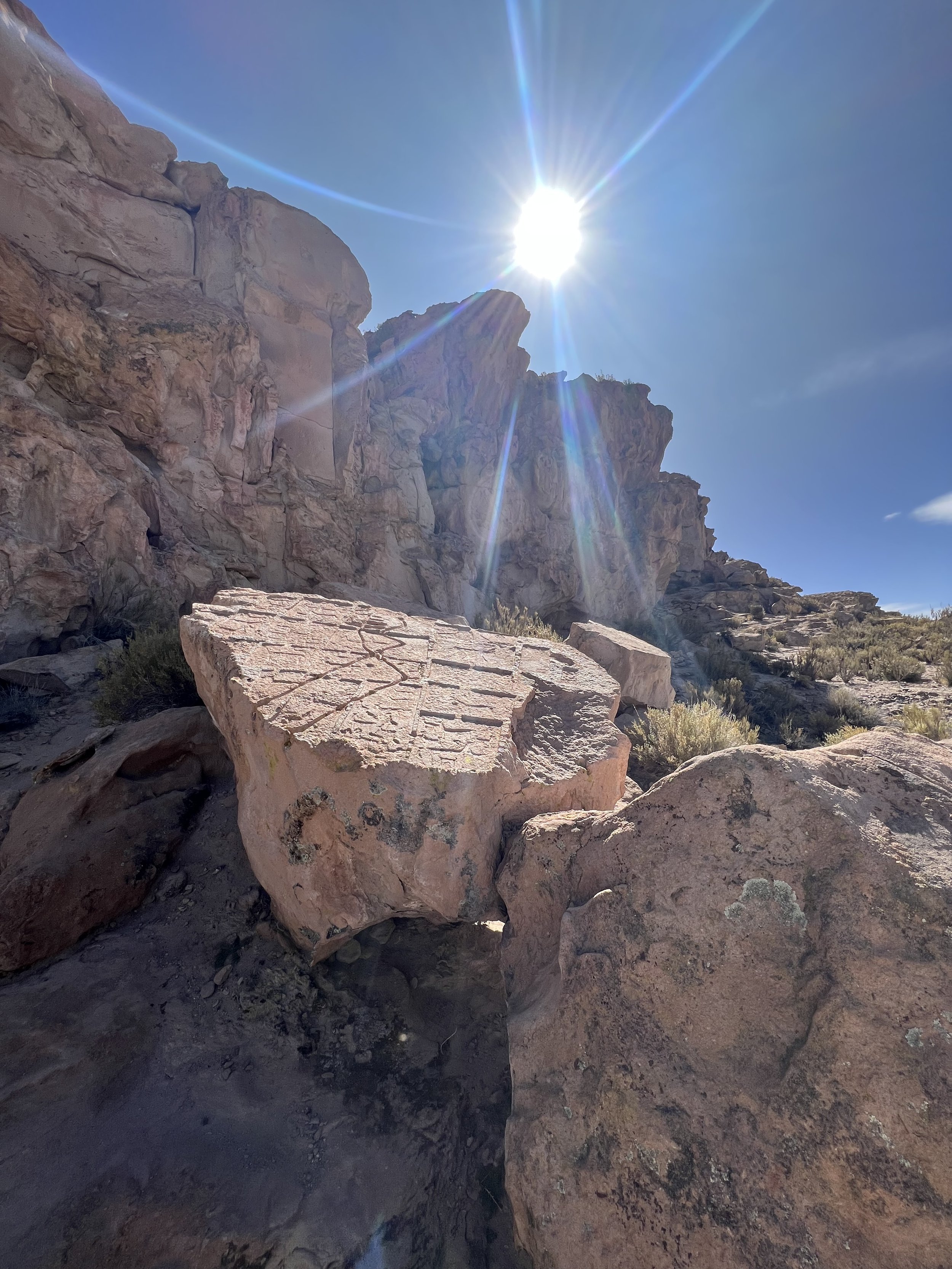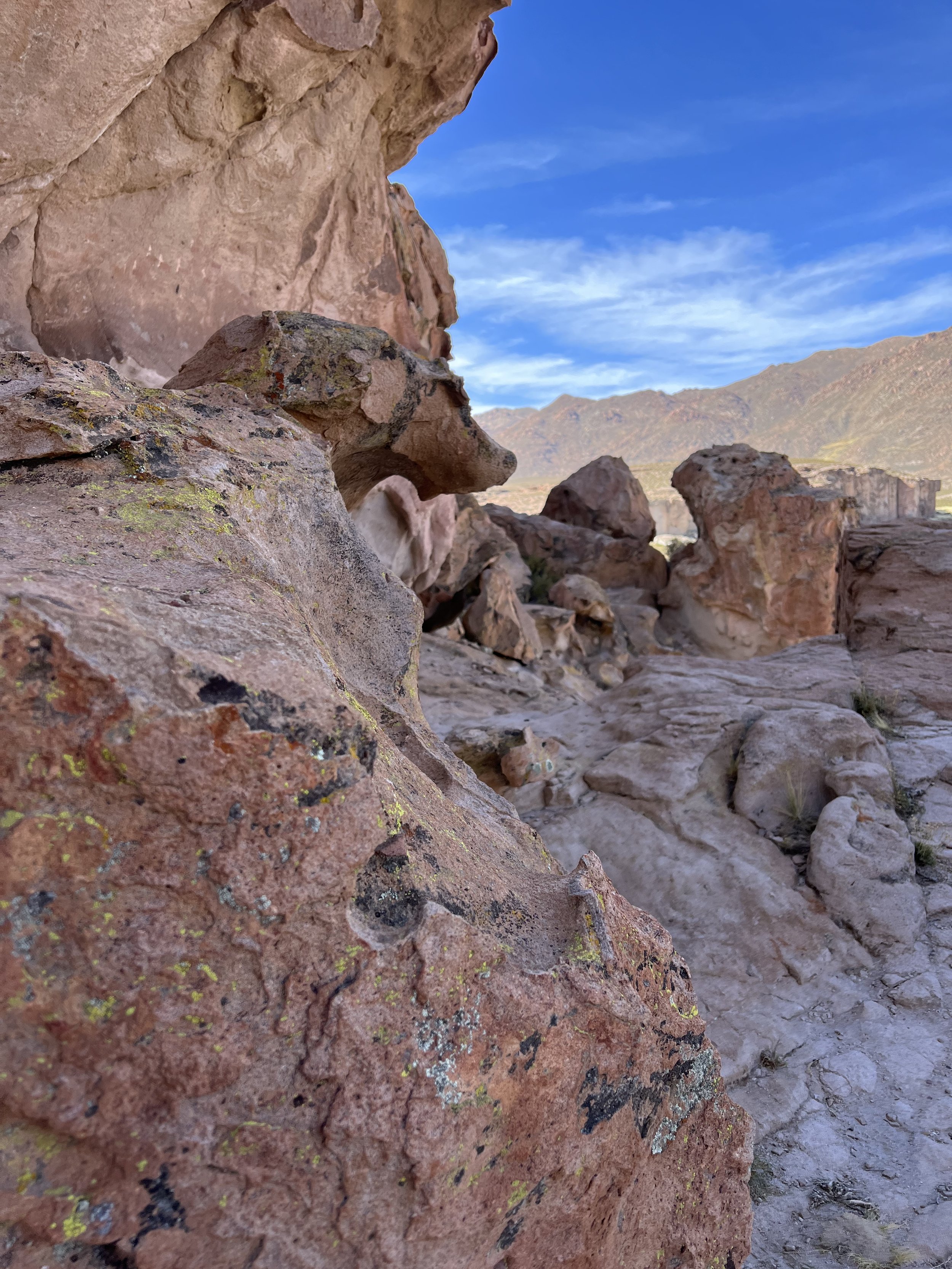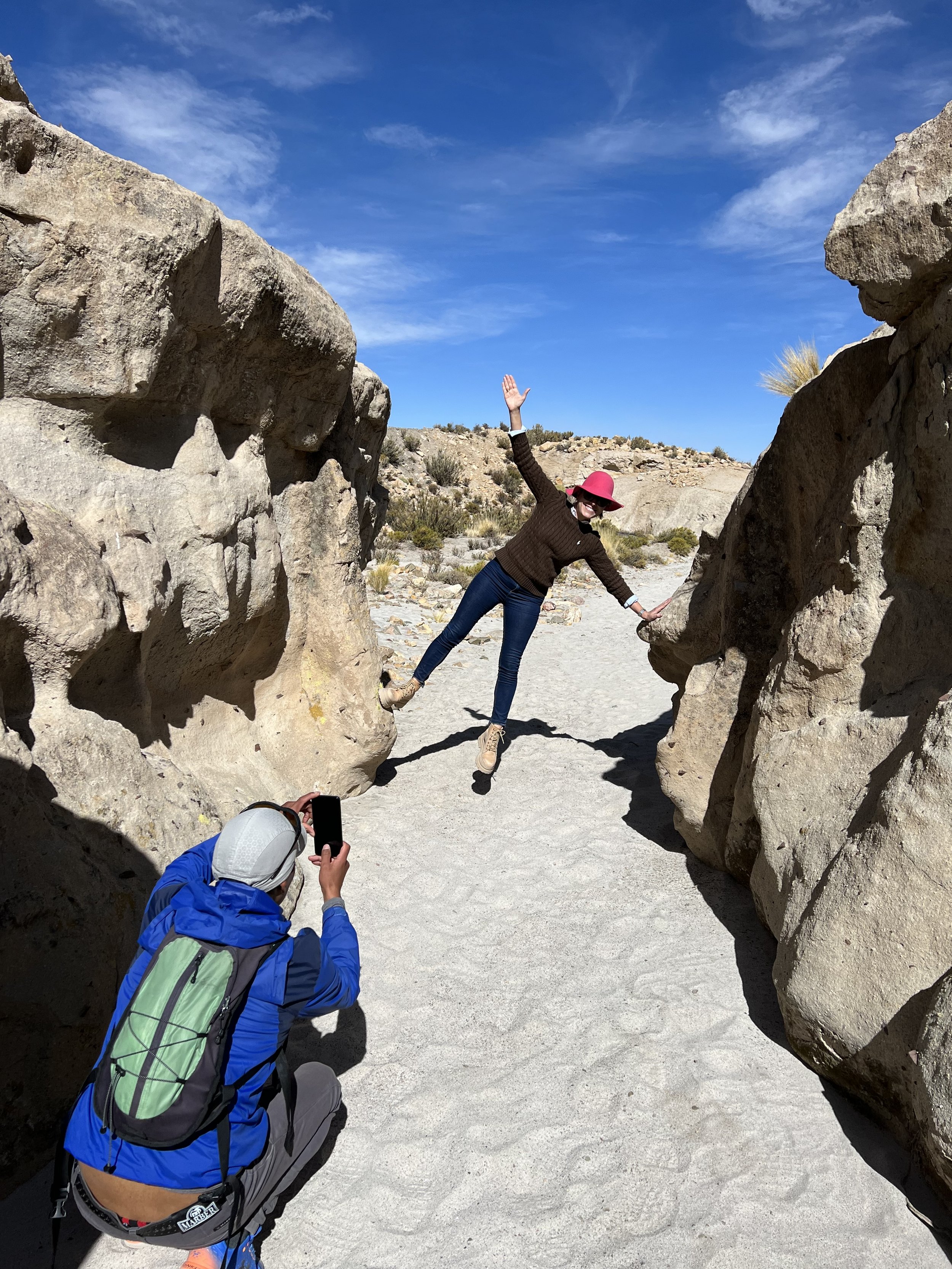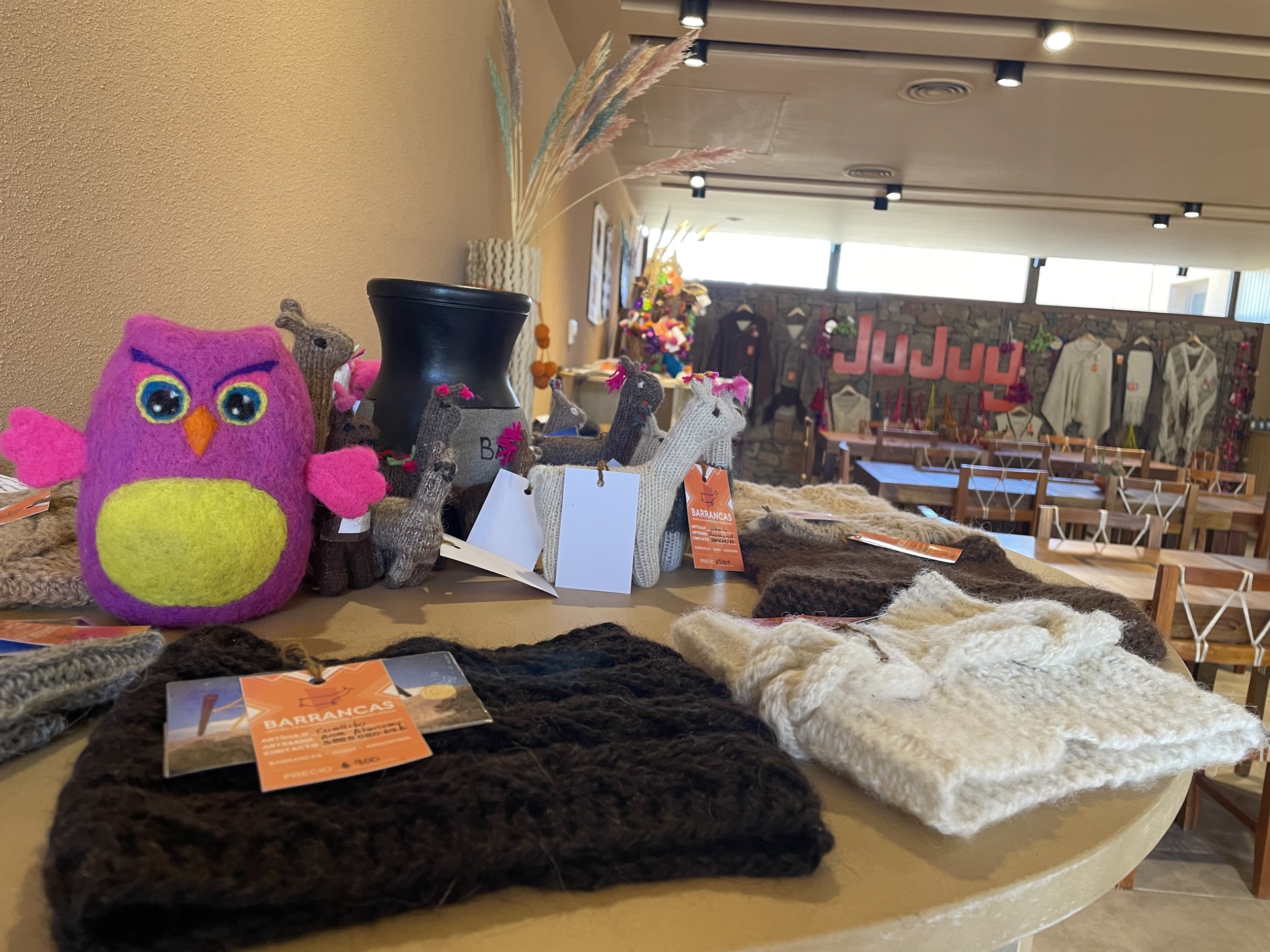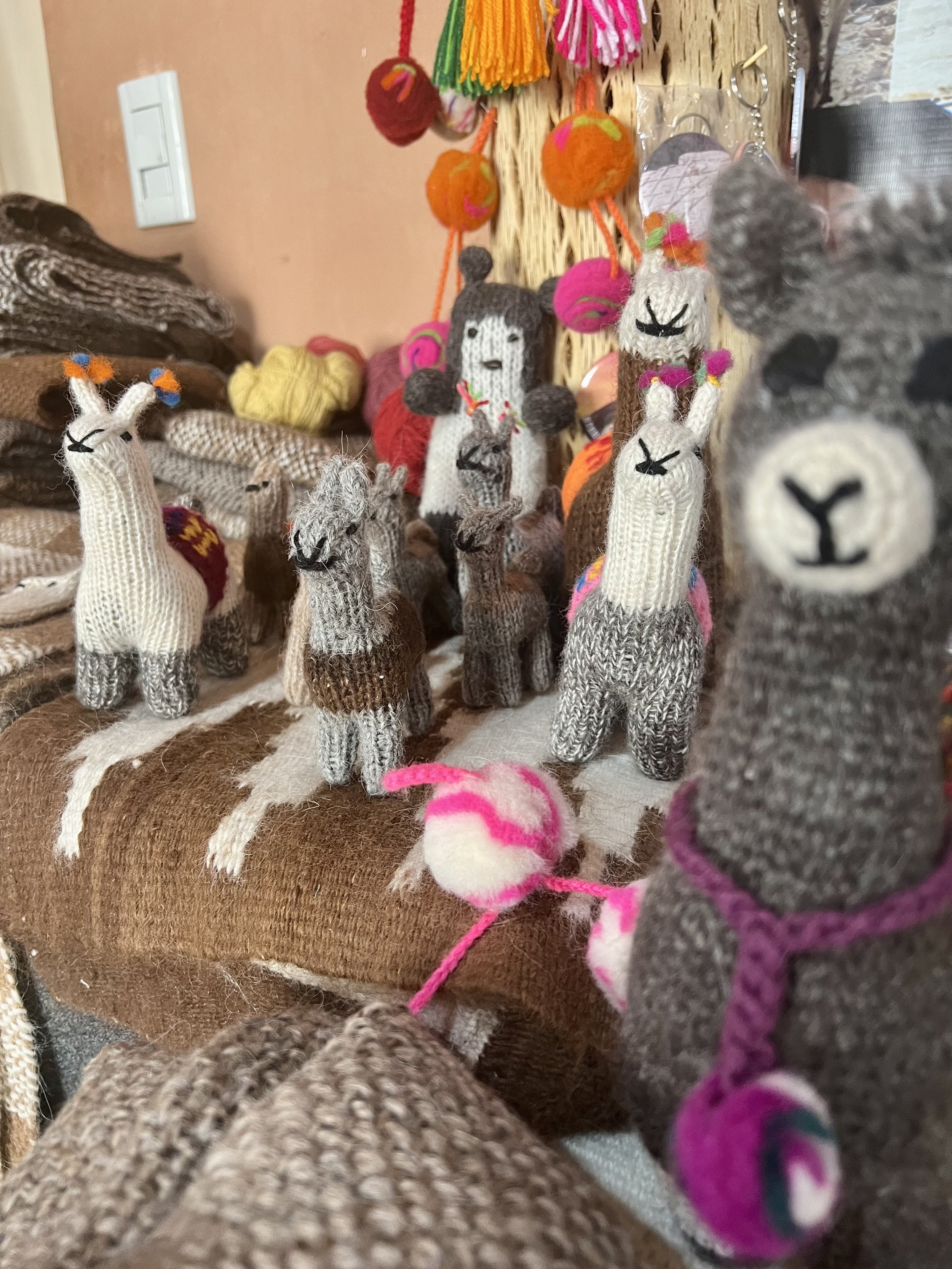Barrancas
Rupestrian art in a magnificent setting In the Cochinoca Department, province of Jujuy, an open-air museum attracts the attention of @tripticity_. It is the cave art on the outskirts of the town of Barrancas, also known by the name of Abdón Castro Tolay, who was a school teacher decades ago.
The surrounding landscape is sublime, with natural walls about nine kilometers long. They are the ravines formed by erosion, which protect a fertile valley through which zigzags a natural water course that, at times, almost magically, hides and then sprouts again forming the green river valley.
Everything there is pure history. These enormous natural walls served as a canvas for the artistic manifestations of the pre-Columbian peoples.
The access is a bit confusing. After passing by the Salinas Grandes, continuing along National Route 52, you take the crossroads of Provincial Route 75. We turn there, still unaware of the tremendous experience into the past we were about to experience.
We crossed the river by the narrow bridge while the strong wind that usually blows in the puna lifted the sand of its beaches, generating a somewhat intimidating effect, a mixture of suspense movie and far west adventure.
Once in town, we headed for the very modern Archaeological Interpretation Center, where Martín Alejo, was waiting for us, who would guide us through the Municipal and Cultural Reserve.
Already on the way, he was transmitting us with absolute precision and empathy the stories of the area.
Taking advantage of the sun, we started the circuit admiring the Piedra-Mapa. Enormous, surprising, the petroglyph reveals information about the daily life of the Andean culture on the breeding of llamas, the corrals and the course of the water. We were pleased to listen to the expert's precise account of the testimonies of the past, in such a prominent natural setting, under a clear blue sky.
We continued on our way to the Labyrinth. The vehement waters brought by the river in the summer season modeled the stone and created a narrow path between the high walls, where it is worth getting lost in the random shapes of nature.
Then we returned to the reserve to discover with Martín the cave paintings on the overhangs of the ravine, as well as the unique petroglyphs, while some shy vizcachas -also known as chinchillones- were sunbathing up high.
The most striking petroglyphs are those of the llama caravans, in which you can even make out the breastplates with which the natives identified their herds, as well as those of the tarucas, all carved with absolute precision.
On the way back to the Interpretation Center, after the unforgettable trekking proposed by our expert guide, Jesica gave us the guided tour.
Before leaving, we went to the store and handicraft store that Martin and his partner America offer to visitors, to get llama wool fabrics. Some blankets made on a loom, with beautiful earth colors, fun crocheted llamas and the classic super warm socks. While we were choosing the valuable souvenirs, her daughter, the friendly Aslí Mailén and her playful pets appeared.
After saying goodbye, leaving Barrancas again in the middle of the sandy wind corridor, we could not help but comment on the joy we felt discovering this treasure of a place, also the birthplace of one of the most professional and outstanding guides we have ever met.







